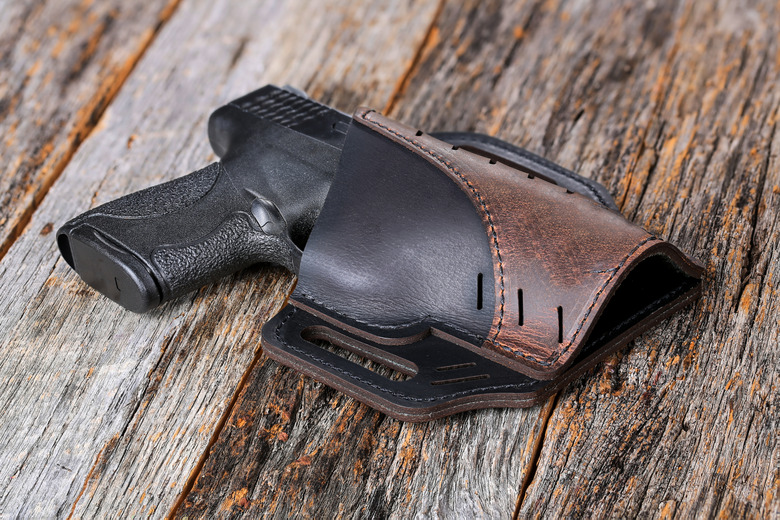How Do You Calculate Recoil Velocity?
Gun owners are often interested in recoil velocity, but they aren't the only ones. There are many other situations in which it's a useful quantity to know. For example, a basketball player taking a jump shot may want to know his or her backwards velocity after releasing the ball to avoid crashing into another player, and the captain of a frigate may want to know the effect the release of a lifeboat has on the ship's forward motion. In space, where frictional forces are absent, recoil velocity is a critical quantity. You apply the law of conservation of momentum to find recoil velocity. This law is derived from Newton's Laws of Motion.
TL;DR (Too Long; Didn't Read)
The law of conservation of momentum, derived from Newton's Laws of Motion, provides a simple equation for calculating recoil speed. It's based on the mass and speed of the ejected body and the mass of the recoiling body.
Law of Conservation of Momentum
Law of Conservation of Momentum
Newton's Third Law states that every applied force has an equal and opposite reaction. An example commonly cited when explaining this law is that of a speeding car hitting a brick wall. The car exerts a force on the wall, and the wall exerts a reciprocal force on the car that crushes it. Mathematically, the incident force (FI) equals the force (FR) magnitude and acts in the opposite direction:
\(F_I=-F_R\)
Newton's Second Law defines force as mass time acceleration. Acceleration is change in velocity:
\(a=\frac{\Delta v}{\Delta t}\)
so net force can be expressed:
\(F=m\frac{\Delta v}{\Delta t}\)
This allows the Third Law to be rewritten as:
\(m_I \Delta v_I=-m_R\Delta v_R\)
This is known as the law of conservation of momentum.
Calculating Recoil Velocity
Calculating Recoil Velocity
In a typical recoil situation, the release of a body of smaller mass (body 1) has an impact on a larger body (body 2). If both bodies start from rest, the law of conservation of momentum states that m1v1 = -m2v2. The recoil velocity is typically the velocity of body 2 after the release of body 1. This velocity is
\(v_2=-\frac{m_1}{m_2}v_1\)
Example
Example
- **What is the recoil velocity of an 8-pound Winchester rifle after firing a 150-grain bullet with a speed of 2,820 feet/second?**
Before solving this problem, it's necessary to express all quantities in consistent units. One grain is equal to 64.8 mg, so the bullet has a mass (mB) of 9,720 mg, or 9.72 grams. The rifle, on the other hand, has a mass (mR) of 3,632 grams, since there are 454 grams in a pound. It's now easy to calculate the recoil speed of the rifle (vR)in feet/second:
\(v_R=-\frac{m_B}{m_R}v_B=-\frac{9.72}{3,632}2,820=-7.55\text{ ft/s}\)
The minus sign denotes the fact that recoil speed is in the opposite direction to the speed of the bullet.
- **A 2,000-ton frigate releases a 2-ton lifeboat at a speed of 15 miles per hour. Assuming negligible friction, what is the recoil speed of the frigate?**
Weights are expressed in the same units, so there is no need for conversion. You can simply write the speed of the frigate as:
\(v_F=-\frac{2}{2000}15=-0.015\text{ mph}\)
This speed is small, but it isn't negligible. It's over 1 foot per minute, which is significant if the frigate is near a dock.
Cite This Article
MLA
Deziel, Chris. "How Do You Calculate Recoil Velocity?" sciencing.com, https://www.sciencing.com/do-calculate-recoil-velocity-6592101/. 5 December 2020.
APA
Deziel, Chris. (2020, December 5). How Do You Calculate Recoil Velocity?. sciencing.com. Retrieved from https://www.sciencing.com/do-calculate-recoil-velocity-6592101/
Chicago
Deziel, Chris. How Do You Calculate Recoil Velocity? last modified March 24, 2022. https://www.sciencing.com/do-calculate-recoil-velocity-6592101/
